Reaching the Underserved: An NHS Story
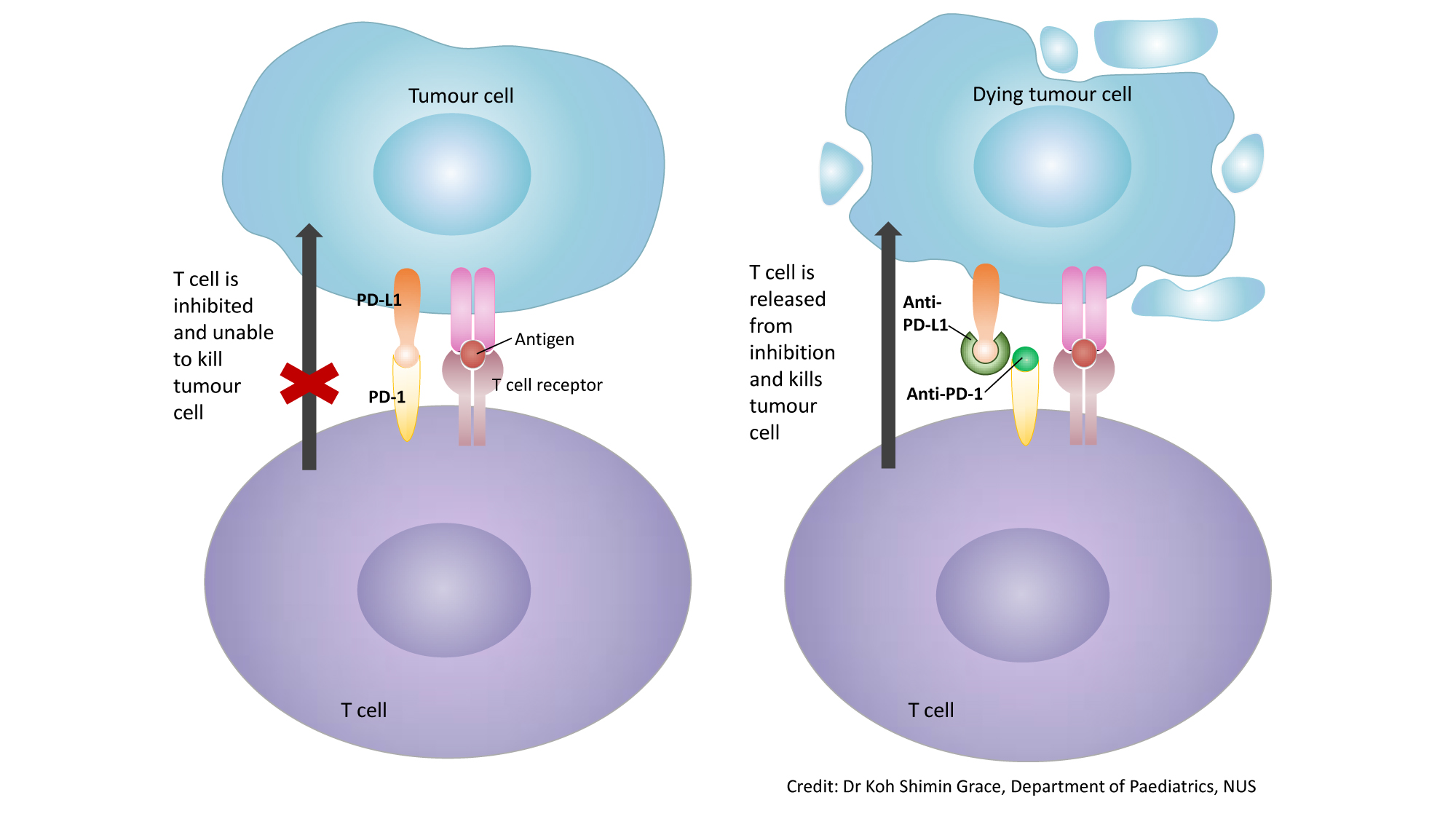
Audrey Koh, Phase II medical student and a volunteer for NHS 2019, interacting with a resident at the profiling station, where volunteers try to find out more about the resident’s medical, social and family history
The annual health screenings by the Neighbourhood Health Service (NHS) took place at Kampong Glam Community Centre on 7 and 8 September 2019, and in Queenstown Leng Kee Community Centre on 5 and 6 October 2019. A total of 825 residents completed their screenings1: 484 residents in Kampong Glam and 341 residents in Leng Kee.
by Faye Ng, Caitlin Wee and Kenneth Loi
Phase II NUS & NTU Medical Students and Committee Members of NHS 2019
The “first-of-its-kind”, NHS was spearheaded by NUS Medicine in 2006 to take integrated, holistic health screening right to the doorsteps of residents-in-need. NHS engaged over 500 student volunteers from different schools, including NUS Medicine, NTU Medicine, NUS Nursing, and NUS Social Work. Volunteers were trained in key skills such as triage taking and motivation interviewing. In addition to designated screening stations set up at public spaces in Kampong Glam and Leng Kee, 66 home visits with full screening were carried out by interdisciplinary teams. With this year’s addition of a mobility and fall risk component designed by our Physiotherapy committee from the Singapore Institute of Technology (SIT), we could better serve residents on their mobility issues.
31.9% of the residents screened across Kampong Glam and Leng Kee came from rental units. In Kampong Glam alone, approximately 48.8% of residents2 screened had a monthly household income of less than $1,800. Beyond screening the underserved, NHS also aims to “reconnect, not replace”. A comprehensive, robust follow up programme, with three follow- up cycles through the year, ensures residents are well-taken care of, long after their screening.
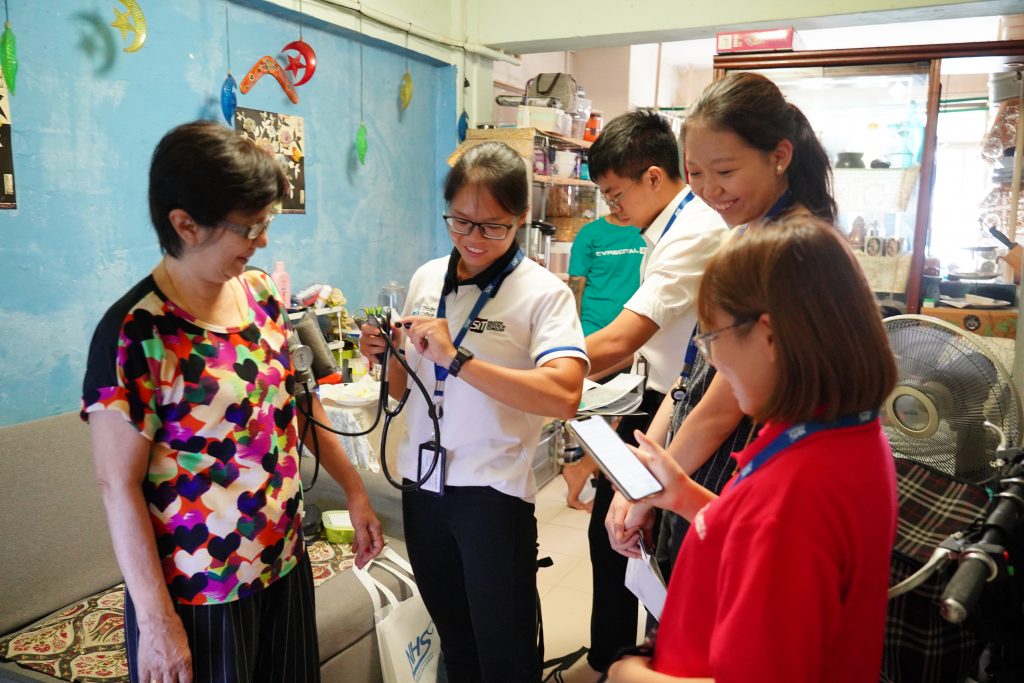 Our door-to-door team seeks to bring comprehensive, holistic health service right to the doorsteps of residents-in-need
Our door-to-door team seeks to bring comprehensive, holistic health service right to the doorsteps of residents-in-need
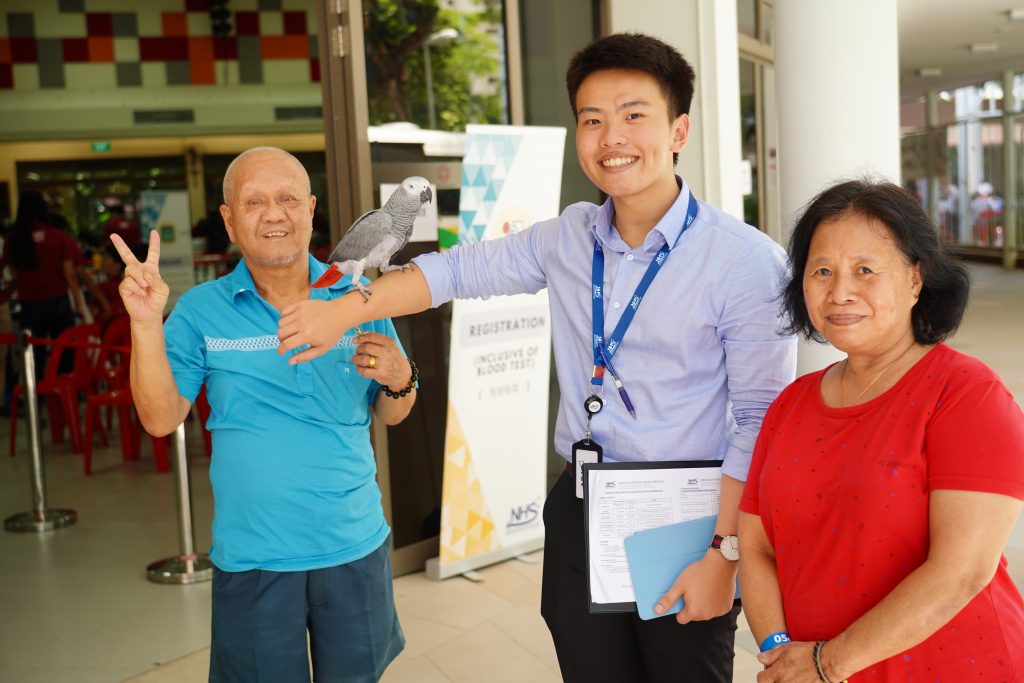 Our volunteer having an enjoyable time with the residents
Our volunteer having an enjoyable time with the residents
Our community partners this year included: all three Regional Health Systems (NUHS, SingHealth, National Healthcare Group), the Health Promotion Board, the Ministry of Health, the Agency for Integrated Care, National Dental Centre Singapore, Singapore Cancer Society and the Active Ageing Council. The increasing presence of key healthcare partners from diverse backgrounds provides students with opportunities for interprofessional collaboration, to provide holistic, team-based care.

Volunteers, ready to greet the residents with their bright smiles. NHS works with the help of over 500 volunteers from the schools of NUS and NTU Medicine, NUS Social Work, SIT Physiotherapy and NUS Nursing
We made some observations: 37.4% of residents screened in Kampong Glam and 36% of residents screened in Leng Kee were either overweight or obese, 20.5% of residents screened in Kampong Glam and 28.1% of residents screened in Leng Kee had high blood pressure, and 48.5% of residents who underwent dental screening in Kampong Glam and 47.5% of residents who underwent dental screening in Leng Kee fell in the ‘unhealthy’ category. To tackle this, NHS included a health education component at the end of the screening, so that residents can be empowered with knowledge to improve their health.
Besides, 40.5% of residents screened across Kampong Glam and Leng Kee underwent blood tests. Residents with abnormal test results had their reports collated at nearby GP clinics to be explained and collected, in a bid to reconnect residents to the healthcare system and receive medication directly from the GPs. Those who had normal blood test results collected the reports through NHS volunteers as well as Tan Tock Seng Hospital’s health coaches, who explained the results and dished out general health advice.
A robust follow up programme ensures sustainability and continuity of care. NHS reconnects residents to existing healthcare providers, providing detailed referrals to our community partners. Furthermore, volunteers follow up with residents in three-month cycles to assess medical compliance and encourage proper healthcare-seeking behaviour.
1 This number is only reflective of residents who completed our screening and received a serial ID; the actual number of residents screened is slightly higher.
2 67 residents did not disclose their monthly household income.
In a nutshell
Residents were screened at a “one-stop shop” in five distinct categories:
- Chronic diseases (diabetes mellitus, hyperlipidaemia, hypertension, obesity)
- Functional modalities (vision, oral health, hearing)
- Fall prevention (fall risk screening, physiotherapy education)
- Cancer (colorectal, cervical, breast)
- Mental health (dementia, depression)
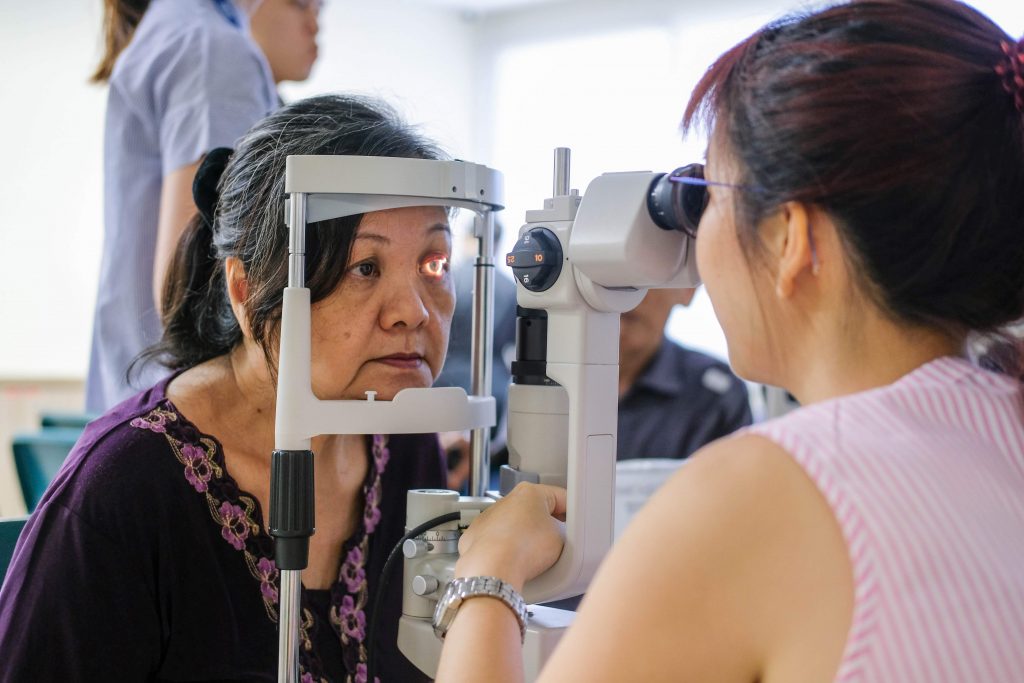 A resident undergoing Advanced Vision screening
A resident undergoing Advanced Vision screening
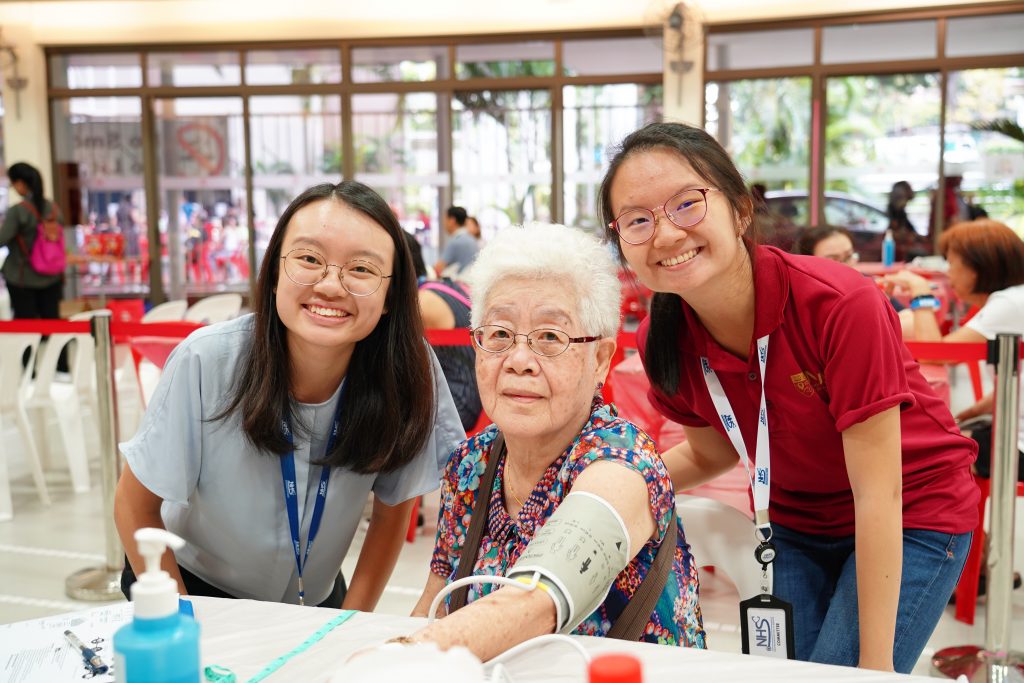 A volunteer and NHS committee member conducting triage for the resident
A volunteer and NHS committee member conducting triage for the resident
New This Year
SIT Physiotherapy Assessment for Fall-Risk
With students from SIT Physiotherapy, NHS 2019 conducted fall-risk screening for elderly residents. This expanded our outreach to residents with mobility issues, who benefitted from fall-risk screening in the comfort of their own homes.
On-site Mammogram Bus
In partnership with the Singapore Cancer Society, NHS 2019 introduced mammogram buses stationed at Leng Kee Community Club. This allowed residents to have a mammogram done on-site, saving them the hassle of receiving a referral for a later date.
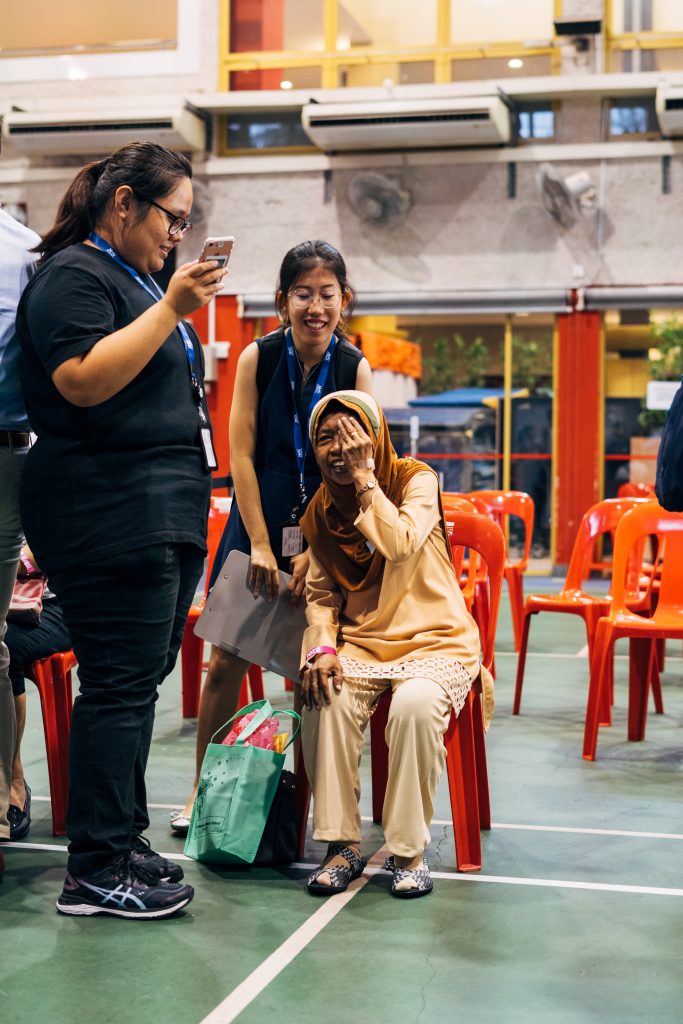 A resident undergoes Basic Vision screening with a Snellen chart
A resident undergoes Basic Vision screening with a Snellen chart
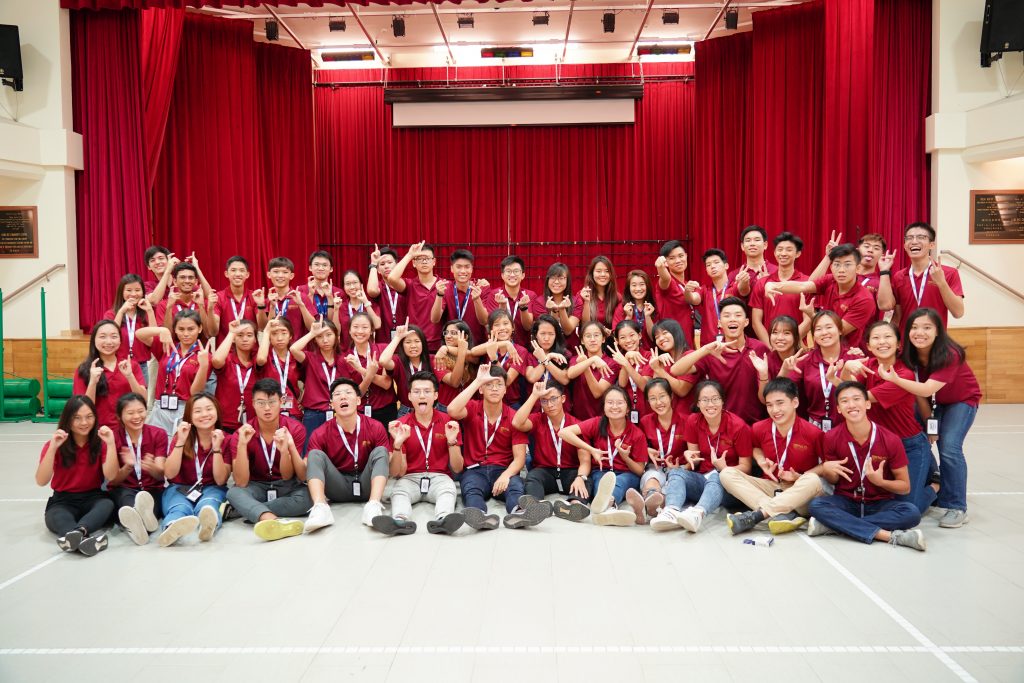 NHS committee at Leng Kee Screening 2019
NHS committee at Leng Kee Screening 2019
From the bottom of our hearts…
I am proud to be in NHS because of the level of relationship and understanding we establish with our residents, and being there with them is a genuinely special experience for me. I have come to realise that any health screening can only provide so much, yet there are often numerous far-reaching and deep seated issues that each resident presents with that as medical students or doctors, we do not have the ability to solve. And I believe that we are only scratching the surfaces of the hard truths and challenges that these residents living in rental blocks have to face every day.
I believe our role as medical students, is to fully support, encourage and empower these residents to actively seek the medical or social help they need. In this aspect, I particularly enjoy the collaborative and collegial relationship with SIT Physiotherapy, NUS Social Work and NTU medical students because of the different skills and experience that we can provide to NHS.
Personally, being in NHS has been a journey of growth both as a student and as a person who is learning what it means to serve others; to be genuinely involved in the problems and emotional baggage that residents come with and attempting to solve them together.
– Bryan Leow
Publicity, Health and Community Outreach (PHCO) Committee Member, Phase II NUS Medicine
We had many opportunities to have conversations with the residents, be it at the screening itself or in their homes, and it is these conversations I will treasure the most. During our door to door publicity, speaking to the residents who tell me that they marked the date in their calendar, and come every year made me realise what a difference NHS is making to their lives. However, the residents who really leave an impact are those who have lost faith in the healthcare system. These residents are mostly reluctant to come for screenings because they think it is just another health screening that cannot solve their problems.
A handful take the opportunity to vent their frustration at us. In these cases, I have learnt that the residents need someone to genuinely listen and empathise with them, and it is a bonus when we are able to convince them to come down and give the screening a chance. It really brings to life the quote, “to cure sometimes, to care often and to comfort always”. Coming to the hospital or clinic may already have required a huge effort on their part due to various social and economic barriers they have, and as doctors, it is key to understand the barriers each and every patient faces in order to build better rapport with them, gain their trust, and be better able to refer them to the correct avenues where they can get help, financially or socially. Only then will the optimum level of healthcare be achieved, when the resident realises that it is their right to obtain proper healthcare and that there are many avenues of help available.
– Kwong Shuen
Logistic Committee Member, Phase II NUS Medicine
Every trip down to the rental blocks was a humbling one. Being part of the follow-up committee, the house visits we conduct allow us to understand the rental block residents a little better – their living conditions, their concerns and the challenges they have in seeking healthcare. Sometimes, all we had to give was our time and a willing ear.
NHS also helped me gain a more holistic view on healthcare. As we partner with different healthcare and social work organisations, it unveiled the many aspects of healthcare and the set of challenges each aspect entails. Providing care for the residents is indeed a team effort and medical knowledge alone is clearly insufficient in reaching out to our future patients. It is always very heartening to work alongside committee members from different disciplines to understand the obstacles each resident is facing, slowly tearing down these barriers and reconnecting them back to the system.
– Foo Fang Qing
Follow-up Committee Member, Phase II NUS Medicine
